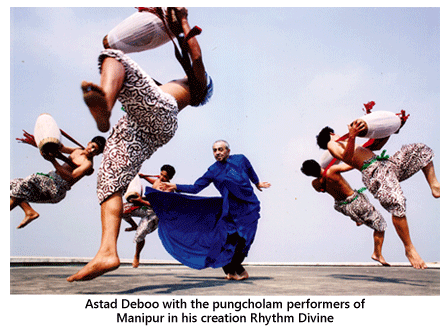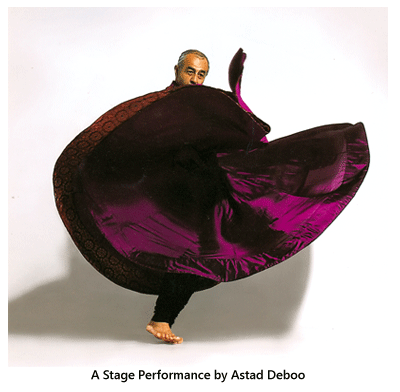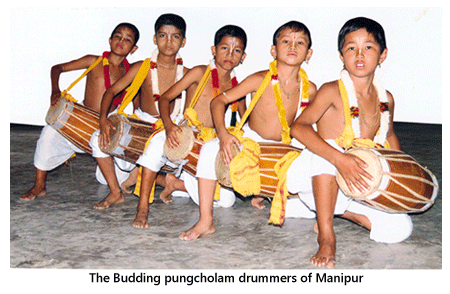- Prelude
- Editorial
- A Conversation with Sheela Gowda
- The DIY Artist with a Mission
- Discovering Novel Horizons
- A Conversation with Raqs Media Collective
- Manjunath Kamath
- Jitish Kallat- the Alchemist
- The Artist and the Dangers of the Everyday: Medium, Perception and Meaning in Shilpa Gupta's work
- An Attitude for the Indian New Media
- Weave a Dream-Theme Over Air or a Medium like Ether
- Installation in Perspective: Two Outdoor Projects
- Towards The Future: New Media Practice at Kala Bhavana
- Workshop @ Facebook
- Desire Machine: Creating Their Own Moments…
- Typography: The Art of Playing with Words
- Legend of a Maverick
- Dunhill-Namiki
- The Period of Transition: William and Mary Style
- The Beauty of Stone
- Nero's Guests: Voicing Protest Against Peasant's Suicides
- Patrons and Artists
- The Dragon Masters
- What Happened and What's Forthcoming
- Art Chennai
- Art Events Kolkata
- Winds of Change
- Art Bengaluru
- Mumbai Art Sighting
- Musings from Chennai
- In the News
- Previews
- Ascending Energy, Merging Forms: Works by Satish Gujral
- Re-visiting the Root
- The Presence of Past a New Media Workshop
- Taue Project
ART news & views
Legend of a Maverick
Volume: 3 Issue No: 15 Month: 4 Year: 2011
Culture
A Conversation between Rumi Banerjee and the well known face in the experimental dance arena, Astad Deboo.
Rumi Banerjee: What exactly is the dance form that you are associated with?
Astad Deboo: It is a Contemporary Dance form for the last 44 years. I have been evolving myself as a creative person, as a performer through the decades, after having studied Kathak and Kathakali and then also having gone across and exposing myself to various performing art disciplines in Indonesia, Japan and also been in London and US studying contemporary dance. With this amalgamation of various schools of performances I started evolving a signature style of my own which is very distinctive.
R B: You have formed the 'Astad Deboo Dance Foundation'. What is the motive behind this and what are your aims?
A D: Well…. The 'Astad Deboo Foundation' started eight years back which should have started much earlier. Basically  the foundation started on many level such as Education of Contemporary Dance and the teaching deaf performers and for the last three years I have also been very much involved with the street children, primarily in Delhi. The young talented performers who belong to the NGO Salam Balak Trust, and also the fact that for the last 15 years I have been working up in Manipur with the traditional performing arts primarily Thangta the martial Art, and Pongcholam, art of drumming….the foundation helps people…and contributes which enables me to work as a foundation for the performing art and today in order to receive contributions and also to make sure that the contribution being made by the people goes to an institution and spent on a very wide scope, encouraging young performers who would be thinking in the direction of innovative creativity.
the foundation started on many level such as Education of Contemporary Dance and the teaching deaf performers and for the last three years I have also been very much involved with the street children, primarily in Delhi. The young talented performers who belong to the NGO Salam Balak Trust, and also the fact that for the last 15 years I have been working up in Manipur with the traditional performing arts primarily Thangta the martial Art, and Pongcholam, art of drumming….the foundation helps people…and contributes which enables me to work as a foundation for the performing art and today in order to receive contributions and also to make sure that the contribution being made by the people goes to an institution and spent on a very wide scope, encouraging young performers who would be thinking in the direction of innovative creativity.
R B: Your association with deaf students seems a very difficult proposition….how do you get them to feel the essence of music without hearing it?
A D: My work with the deaf started off in Calcutta. When I proposed a workshop to The Action Players which is a deaf theatre company, my initial proposal was to do a workshop not with any intention that in the years to come it would dominate such a large portion of my time ….so the first two years was just a little workshop which sort of gave the young actors a little flavour. These workshops were very short, about a four day workshop. But in the third year there was a sort of challenge to work with these young talented people, they were actors where dance and movements was being introduced. In comparison to my last group which was the girls from the Clarke's School for the Deaf from Chennai, but these girls were already trained in Bharatnatyam dance, so they had a body of movement, a dance vocabulary, which I could use and proceed in a different direction and compare to the way I taught The Action Players. But whoever I teach, because my style is minimalistic, everybody has to learn to count. The count of eight has a sort of rhythm and once this rhythm comes into your system, this gives the base foundation and then as the work progresses I see the performers responding on taking up my style. The counting is sort of fast pace which goes to counts of fours and sevens and nines up to sixteen. Eventually once they come to know the choreography they start bringing in the elements of the rasas to say that this is what I would like you all to express and that has come through years of working.
R B: What should one expect from your current show “Rhythm Divine” with dramas of Manipur?
A D: Expect a dance performance. Well as I mentioned earlier that I have been looking back in Manipur for the last fourteen years started off with the Thang ta practice of Martial Art form, and then through the years started working with Guru Satyaban who was the Guru of the Pungcholam performers, again what fascinated me about is that not only they drum but also have a very rhythmic way of moving, so they are dancers in their own right in a way. They move across the floor while playing the drums, they move in mid-air. So you will see them dancing in the style of Astad Deboo but at the same time you will see them also performing, and the rhythm begins right from the foetus in the mother's womb. The Rhythm begins from there, so when you see the opening of the performances that they are all little fetuses which starts breathing and sort of grows.
R B: Which are the various countries that you have performed and the accolades that you have received from them?
 A D: Well….I have performed in sixty-five countries in the last four decades of my career. And as I've mentioned, accolades are for me the performance and that creative dialogue between the audience and the performers. So I look at them as accolades, an opportunity to perform at various prestigious houses across the world, in National festivals where the platform is huge and the audiences who come are knowledgeable are interested in seeing something new, or even had the opportunity of collaborating with various performers, various colleagues.
A D: Well….I have performed in sixty-five countries in the last four decades of my career. And as I've mentioned, accolades are for me the performance and that creative dialogue between the audience and the performers. So I look at them as accolades, an opportunity to perform at various prestigious houses across the world, in National festivals where the platform is huge and the audiences who come are knowledgeable are interested in seeing something new, or even had the opportunity of collaborating with various performers, various colleagues.
R B: What kind of an audience would you expect before a show? Is it a performance for the mass or the class?
A D: My performance is for the class not for the mass. Again the class is also very elite. When I am preparing for a performance I am open and also I am aware of the fact that the kind of performance I do, the style of dance I do is for connoisseurs who appreciate dance, who has seen dance. Performing artists, painters, musicians, and general audiences who are interested come to see my work. Unfortunately the problem today I face in the country is that there are not enough platforms or presenters. Over a decade now I had to become a producer for my own work, because I don't get really invited by organizations, whether it is Kolkata or Delhi or even my home city. Presenters, who are presenting dance music, are not really interested in what I do. In Kolkata no organizations have invited me for the last ten years. Similarly, last month I again produced my work with the street children of Delhi and I showcased them in Chennai, all over Pondicherry and then Tiruvannamalai. The work continues and it has not stopped in spite of constant hazards which are there in the field of performing art and especially the kind of work that I do.
R B: You involved your signature style by eliminating few traditional moves and infusing your own style in your performance. Do you go through a research before your performance?
A D: Well…. definitely there is a process of creating a new work. I created a work with the Pung. It took me a year and a half to create it. Sitting with Guru Satyaban trying to tell him what I am looking at and then seeing the rehearsals and selecting the stanzas and phrases I would like to incorporate or the music I had chosen for a particular piece of work and then also to see if the students are comfortable in learning. One does research, a lot of people today very loosely say, “I am doing a modern dance” and just play some different music or bring in a style which do not suite their body. When I recall my past, nobody really wanted to be a part of the contemporary modern dance, and now it's like everybody wants to be a part of it, but I feel everybody cannot be creative… People are creative but in the contemporary way of looking…there are the traditional Ramayana, the Mahabharata and the Geet Govinda but under the contemporary umbrella there is the opportunity to take works from political, contemporary poets, or even Rabindranath Tagore's as my next work coming out, which hopefully materialize during October, I have used some of his works earlier, so I am looking forward to redoing some older works and adding some new works.
R B: Have you ever been criticized for your styles, your techniques and how would you take a criticism?
A D: Today people are very easily criticized; they don't really critique the work. We have very few people who critique the work.. When I started off there were lot of senior Gurus who sort of totally dismissed my work saying, “What is he doing? This is not done” and similarly lot of traditional people were taken in because of their outlook, their ways of looking in to the dance. So when you come you should come with an open mind. People do not have the thinking of looking at what has taken into creating the work. But at the same time there were small core groups of enlightened audiences whom through the years I cultivated to come and see my work from their point of view. So that was how I built up a relationship with my audience and even with performers. If there was a dialogue where people are really, interested people will come back and talk, and then I explain it to them.
R B: So were you an iconoclast to your Gurus?
A D: Well… my two Gurus, my first Guru was Guru Pralhad Das from Kolkata, was a Kathak dancer who sort of dismissed my style and he didn't want to be a part of it. My Kathakali Guru Ekesru Paniker in Mumbai was much more open, and again when I studied Kathakali for six years. I studied not to be a Kathakali dancer but more for their technique, to help my creativity. When you create you have to have a body and a discipline of movements. I don't expect everyone to like and appreciate my works. But then sometimes people don't really make the effort to try to understand…but that's perfectly okay….I was not discouraged by what people have said about my works….in the past or in the present.
R B: How do you think of reaching out to the masses?
A D: Well….the masses if you see is more towards Bollywood, one of the way of reaching towards the masses is if our cable channels decides to have serious programme on art. Not only just dance….because we don't have a single channel, where this arbitrary discussion of someone who had established himself on the field of art takes place. On the contrary there are so many channels in the West or even countries like Singapore and Japan there are channels which are devoted to art whether there its music, painting, theatre. So unless media which is very powerful today gives an effort to introducing Art like this to the mass, it will be very difficult to reach out to the common people.

R B: Were you ever disappointed with your performance?
A D: Sure….at times one gets disappointed with one's own performances but that hasn't been very often. There were reasons like technical failure or sometimes the audiences have been quite rowdy.
R B: We were discussing the philosophies behind your performances. Do you have any religious influence in your works? Or spirituality?
A D: There is an element of devotion there; I am not preaching the philosophy of Hindusim or Christianity here, being a Parsi I came from a very strong Zoroastrian belief. And for having studied Indian classical Dance an element of Hinduism is very much there. I went to school run by the Jesuits from Baltimore America and then having a very strong group of friends who belonged to Islam Religion and as a child when one was exposed to all these religions, one knows that all religions have both good and evil. I look at it that way. The approach, the philosophy are bit different, there you may disagree. I am very happy going to a Hindu Temple, I am very happy going to a Mosque or Church or to my own. I am not a fanatic, I am open. To say that if you only become Catholic then only you can go to the kingdom of heaven, I do not believe it. In my work there is an element of devotion, of giving, and you can interpret it from your point of view.